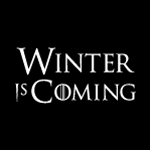How Your Game of Thrones Sausage Gets Made
Over on another hit HBO program, John Oliver said last year that the one thing no one should ever do is find out how something they some love (their sausage) gets made. So it was with a little trepidation that I approached the New York Observer‘s interview with Bryan Cogman, the third dragon head in the Benioff-Weiss production heads of Game of Thrones, in an interview which purported to disclose how exactly the episodes are written.
Watching sausage get made isn’t pretty. But apparently making GoT is much more fun. Rainbow fun in fact. It’s all color-coded index cards.
Photo by Nick BurnsAccording to Cogman, the show has settled into something of a rhythm over the seasons.
As we’re shooting one season we’re trading emails and/or chatting on set about the broad strokes of the next season: “Character X” starts at “blank” and we want him or her to end up at “blank.” Then, as we start to approach the end of production, David and Dan, in some years, will assign the various writers a few characters. For instance, when we were working on Season 4, I was assigned Arya and a few others. So I’d go home and work for a few weeks on my “Arya Season 4,” keeping in mind a few scenes we’d already discussed and what chapters and scenarios and themes from the books we might use.
Then, in January, when we’re back in L.A., we’d meet for about two or three weeks, armed with the work we’d all done individually, and throw it all up on the board. You debate, you use some stuff, you throw some stuff out, you think up some new stuff. Sometimes what you end up with is really close to the individual outlines. Sometimes it’s very different.
This fits with the sorts of generalized things Benioff and Weiss have said before—that each season’s development is a year long process, and that there is never time off. They’re always working ahead to the next season and the next.
After we map out all the main characters’ individual arcs, using color-coded index cards, we arrange them by episode and get a rough idea of the scene order. From there, we all split up again and each tackle a chunk of the outline—a detailed outline, which sometimes ends up being over a hundred pages. David and Dan polish it, and that’s what we use to script our episodes. I’m generally assigned mid-season episodes—it just seems to work out that way. George wrote a script per season for the first four seasons, but took a break for Season 5 as he’s hard at work on the next book. And while George isn’t in the writers room, he reads the outlines and gives his notes.
Considering the round-robin format of nearly every episode, that means by the time an outline is done, every episodes (except say The Battle of Blackwater) are myriad rainbows of interwoven story lines. I now have this image of Season 4, episode 2 as all different colors until it reached the back half where everything turns purple. Nice to know that George, even when he’s not writing for the show, generally reads everything.
From there I write my two scripts—it takes me about a month and half to do both—D&D read them, give notes, I do a rewrite, D&D sometimes do a pass on it themselves. And we continue to tinker with all of the scripts through prep and production. But they’re generally camera-ready when we finish them. They have to be, as we have to have all 10 scripts complete well before shooting starts. We shoot all 10 episodes simultaneously, out of order, like a big, 10-hour movie, with two shooting units going at all times, sometimes in different countries.
From our filming coverage over the years, this last bit is not surprising. Especially the filming on location parts. Filming the show movie style is the only way to do it in a way that’s financially feasible (and logistically. Remember, in A Day in The Life, the producers revealed every last piece of equipment has to be carried in be hand. No vehicles.)
We’ve never had more than four in the writers’ room at any one time, and in the case of Seasons 1 and 4 it was just David, Dan and me. We had the wonderful Vanessa Taylor for Seasons 2 and 3, and this past season we had a terrific young writer named Dave Hill joining the staff, so that was great. But in the end, the show’s voice is David and Dan’s. My job is to support that voice and write for that voice.
One of the things about Game of Thrones is how consistent the voice is across the entire production. That’s only achievable via iron will or having a very small team. I suspect Benioff and Weiss wouldn’t have time for the former.
To read the rest of Cogman’s interview, including how he feels about spoilers, check out the full interview at The New York Observer.




Spoiler Alert!
Please take care to tag spoilers in your comments by wrapping them with <spoiler></spoiler>. Spoilers in comments are hidden by a gray overlay. To reveal, simply hover or tap on the text!